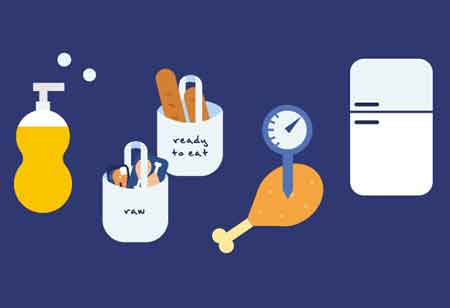THANK YOU FOR SUBSCRIBING
Be first to read the latest tech news, Industry Leader's Insights, and CIO interviews of medium and large enterprises exclusively from Food and Beverage Tech Review
Are Enterprises Ready to for the Future of Food Safety?
Food safety trends will comprise the improved process monitoring, new labeling guidelines, and supply chain traceability that will help satisfy the demands from an involved consumer base.

By
Food and Beverages Tech Review | Tuesday, October 13, 2020
Stay ahead of the industry with exclusive feature stories on the top companies, expert insights and the latest news delivered straight to your inbox. Subscribe today.
Food safety trends will comprise the improved process monitoring, new labeling guidelines, and supply chain traceability that will help satisfy the demands from an involved consumer base.
FREMONT, CA: Various kinds of food safety regulations are set for the implementation during the last decade, including the compliance of small businesses to follow the new Produce Safety Rules (PSR) by Jan 28, 2020. Food safety has existed for as long as people start consuming, but only in the last decade has the industry seen such a monumental transformation of efforts to protect the public from unsafe products. Here are some of the trends for food safety that the food companies must know in 2020.
Enhanced Digital Solutions for Greater Chain Traceability
Many digital solutions can enhance supply chain traceability. Digital sensors that control temperatures and humidity, door closure sensors and a host of other monitoring  systems are starting to see more extensive use. These sensors can account for examples that are prone to human error. Also, many food processors still use the traditional office procedures of manual tracking, billing, and inventory systems that are not helping to support the supply chain traceability.
systems are starting to see more extensive use. These sensors can account for examples that are prone to human error. Also, many food processors still use the traditional office procedures of manual tracking, billing, and inventory systems that are not helping to support the supply chain traceability.
Safe Date Labeling
While it does not look like a food safety trend, it is a reaction to widespread consumers' complaints between what foods are technically and truly organic and healthy. These food classes do not contain any hormones, antibiotics, or any kind of artificial flavors. Hotel and restaurants that are marketing healthy menu choices need these product clarifications to satisfy their customers.
These types of labels, along with the Standardized Date Labeling on food, will be scrutinized to make sure these time frames are within acceptable standards - not only for freshness but also to reduce the chance of bacterial colonization that contributes to most outbreaks of foodborne illness.
Food Storage Safety
Bad food is dangerous to customers and costly to operators. That's why storing foods safely and reliably is so important, and food storage requires equipment that won't break down. With RDT's refrigeration systems, redundancy and the ability to provide temperature alarm and reporting are part of the equation, but so, too, must be properly maintaining and cleaning your refrigeration equipment. Get some quick tips by downloading our maintenance tips sheet to learn more.
See Also: Top Energy Sensor Consulting Companies
I agree We use cookies on this website to enhance your user experience. By clicking any link on this page you are giving your consent for us to set cookies. More info







